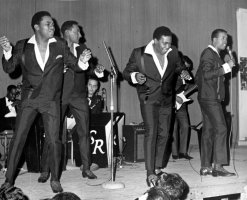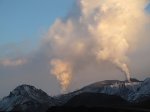Online Magazine
Recent Posts
- Safeguard your Cellphone Photos
- Black & White to Color – Instantly
- Wearing Many Hats
- Video Roundup
- Rescuing Your Blurry Pictures
- Showing Their Age
- What is Your Angle?
- Panorama Photos
- Humorous Photos
- Close Ups
- Fisheye Pictures
- Photo Antiquities
- Printing Big
- Appreciating Scale
- Celebrity Sightings
Tags
More Places to Go
- Free "How-To" Books “How To” books for popular cameras 0
- Vist Us on Facebook keep in touch with us on Facebook 2
Archives
- July 2023 (1)
- March 2023 (2)
- February 2023 (1)
- December 2022 (1)
- October 2022 (1)
- September 2022 (8)
- August 2022 (9)
- July 2022 (1)
- June 2022 (1)
- June 2021 (1)
- May 2021 (1)
- March 2021 (5)
- February 2021 (4)
- January 2021 (2)
- April 2019 (1)
- March 2019 (1)
- February 2019 (1)
- October 2018 (2)
- April 2018 (1)
- March 2018 (4)
- February 2018 (1)
- November 2017 (1)
- August 2017 (1)
- June 2017 (1)
- April 2017 (1)
- March 2017 (5)
- February 2017 (2)
- January 2017 (1)
- October 2016 (1)
- September 2016 (1)
- August 2016 (1)
- July 2016 (1)
- May 2016 (1)
- April 2016 (1)
- March 2016 (2)
- February 2016 (1)
- January 2016 (2)
- December 2015 (1)
- November 2015 (1)
- October 2015 (3)
- April 2015 (1)
- March 2015 (5)
- February 2015 (1)
- January 2015 (4)
- December 2014 (2)
- November 2014 (5)
- October 2014 (2)
- September 2014 (1)
- August 2014 (2)
- July 2014 (1)
- May 2014 (1)
- April 2014 (5)
- March 2014 (5)
- December 2013 (2)
- November 2013 (18)
- October 2013 (1)
- September 2013 (1)
- August 2013 (1)
- July 2013 (1)
- June 2013 (3)
- May 2013 (1)
- April 2013 (2)
- March 2013 (1)
- February 2013 (1)
- January 2013 (1)
- December 2012 (1)
- November 2012 (2)
- October 2012 (2)
- September 2012 (5)
- August 2012 (2)
- July 2012 (1)
- June 2012 (1)
- May 2012 (1)
- April 2012 (4)
- March 2012 (1)
- February 2012 (1)
- January 2012 (3)
- December 2011 (1)
- November 2011 (3)
- October 2011 (1)
- September 2011 (2)
- August 2011 (2)
- June 2011 (3)
- May 2011 (4)
- April 2011 (8)
- March 2011 (8)
- February 2011 (10)
- January 2011 (6)
- December 2010 (11)
- November 2010 (14)
- October 2010 (6)
- September 2010 (12)
- August 2010 (2)
- July 2010 (4)
- June 2010 (3)
- May 2010 (1)
- April 2010 (1)
- March 2010 (2)
- February 2010 (1)
- January 2010 (1)
- December 2009 (1)
- November 2009 (2)
- October 2009 (2)
- September 2009 (1)
- August 2009 (3)
- July 2009 (2)
- June 2009 (1)
- May 2009 (2)
- April 2009 (1)
- March 2009 (2)
- February 2009 (1)
- January 2009 (3)
Earth Day 2019
17th April 2019
…how much do we care for Mother Earth?
|
|
||
| April 22, 2019
“49th anniversary of Earth Day. Reflections on this movement.” |
 |
 |
|
|
||
NOTE: I’ve written about Earth Day with minor variations for quite a few years. For this article I’ve made several corrections and additions.
With a few exceptions, I’ve tried to celebrate Earth Day annually since I was a student. In 1970 I was studying resource economics at the University of Michigan so the environment was a central part of my curriculum.
Senator Gaylord Nelson was a major force in organizing the first Earth Day. He wanted to focus our attention on the environment, to measure the effect that the world’s population is placing on our limited natural resources, and to implement the urgent actions to keep the earth sustainable for generations to come. Since then, a generation or two has passed and yet Nelson’s urgency has not translated into the wide and responsive action that many of his disciples would have hoped.
Is Nelson’s intent is now gaining traction? Two years ago, the Paris Agreement was signed. Also known as the UN Framework Convention on Climate Change its goal is to combat climate change. Effective since November 2016 with 195 UN member countries participating, actions are aimed at reducing greenhouse gas emissions.
Sadly President Trump has announced his opposition to the Paris Agreement. Procedurally he will have to submit notice of withdrawal no sooner than November 4, 2019 with completion to be effective one year later. This policy stance shows how controversial environmental issues remain among our electorate.
Within the past couple of weeks, one Democratic candidate for the 2020 presidential election has based his platform on environmental issues. Governor Jay Inslee of Washington state wants to focus on ways to deal with climate change. Many supporters are hoping that Trump is not reelected in next year’s election and that the next administration will rejoin the Paris Agreement. For those voters who support of the goals of the Paris Agreement, the 2020 election may be their opportunity to weigh in.
Stick with me a while as my mind has become unstuck in time.
The phrase “unstuck in time” comes from the pen of the late Kurt Vonnegut. I recall meeting him in the late 1960’s when he was invited to be “writer in residence” at the University of Michigan (U of M).
Vonnegut often visited “The Brown Jug Restaurant” for coffee and to smoke cigarettes. As an aside, he claimed that smoking was the slowest form of suicide. My wife Kris, also a student, waitressed here and would sometimes serve him. Due to her hearing difficulty she admitted that she wasn’t a very good waitress and frustrated Vonnegut with her (lack of) service. More to the point, his stay on campus as writer in residence ended prematurely when he abruptly left saying something like: “I’m leaving Ann Arbor since I have nothing more to teach you about writing.” So it goes.
|
|
||
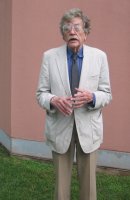 Kurt Vonnegut photo courtesy of Colleen Taber |
 the author and his dog living “60’s back to nature |
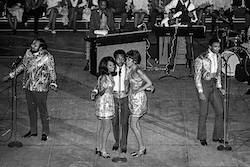 |
|
|
||
|
|
||
The 60’s was a very vibrant and exciting, yet conflicted era. My high school yearbook quotes Charles Dickens: “it was the best of times and it was the worst of times….we were all going direct to heaven, we were all going direct the other way”. This was the period of Viet Nam and Kent State, living off the earth and making peace, hippies and long hair. We were contemporaries of heavy metal, Motown, Bob Dylan, The Beatles, James Taylor and Woodstock music. With this as a backdrop, we happen upon the ENACT Teach-In at the U of M.
In the early 1960s Rachel Carson published Silent Spring, a book describing the harmful effects of pesticides on the environment. Many have cited Silent Spring and the horrible 1969 oil spill near Santa Barbara as two of the impetuses for the environmental movement. In 1970 on March 11, a dedicated environmentally conscience group organized the Environmental Action for Survival (ENACT) Teach-In at the U of M to discuss, to educate and to propose solutions and laws to stem environmental problems created by the earth’s inhabitants. Speakers included Senator Nelson, ecologist Barry Commoner, Michigan Governor William Milliken and U of M President Robin Flemming.
Hoping to fill the 13,000 seat Crisler Arena, the organizers also provided entertainment by the cast of Hair (a Broadway hit show) and folk song artist Gordon Lightfoot. Among the dozen songs Lightfoot performed was the Canadian Railroad Trilogy (click for lyrics). This lengthy song is a poetic ballad describing the building of the railroads across Canada and the difficult tradeoffs between developing a strong, vibrant economy for a growing population and keeping the land pristine for the future – an apt way to point to environmental conflict in musical terms.
The ENACT Teach-In was a success and preceded Earth Day by six weeks. On April 22, 1970 more than 2000 colleges and 10,000 primary and secondary schools participated in the Earth Day Environmental teach-in, celebratory and activism activities throughout the US.
I was planning a career revolving around conservation, ecology and recycling. I studied writings from the likes of educators and humanists Kenneth Boulding, Buckminster Fuller and E.F. Schumacher and took courses such as forestry, resource management and cost-benefit analysis.
The next year I graduated with a degree in Natural Resource Economics. My great enthusiasm for things environmental slowly tapered off. After a year of job hunting in this nascent field I was still unemployed. Instead, I ended up in the computer and publishing business. So it goes.
How well or how poorly have us earthlings have done to improve the environment these past 49 years? Just yesterday I read an option piece that details how environmental issues have bounced around for 30 years between our Republican and Democratic leaders without very much accomplished. This NY Times article by Nathaniel Rich aptly describes political obstacles standing in the way of Earth Day goals.
In spite of the absence of political agreement to attack the environmental issues, there have been deliberate and urgent activities to resurrect many of the same or similar ideas from these earlier decades that call for a change in our lifestyles.
There have been numerous events that have flashed attention on Earth Day. This song with a conservation theme: Conviction of the Heart (click for lyrics) was performed by writer/singer Kenny Loggins at Earth Day 1995 in Washington, DC.
A few years back we took our young grandkids to see The Lorax, a movie based on a Dr Seuss’ book. It describes a place where the trees have been clear cut so there are no trees left. Everyone depends on manufactured air to provide oxygen for their survival. Through battle with “industry”, the hero finally succeeds in planting a single tree. This act restarts the path to regenerating oxygen naturally. While the story is a little far fetched, it presents the oxygen depletion issue to a young generation.
We later took them to see another movie – The Croods which depicts the struggle of a family of cave people to survive in a deteriorating world. They survive through human ingenuity with inventions such as fire, shoes and wheels. I hope this isn’t the only lesson for our next generation – that technology alone is going to save our environment. Yes, we are quite ingenious. But a lot of us have reservations that technology by itself will solve our planet’s woes.
I recently came across an article that describes the fossil fuels versus renewables controversy. The discussion is not only about the environment but also about jobs associated with the various energy industries. The coal industry employees about 50,000 and the more inclusive fossil fuel industry – coal, oil and natural gas – employees 190,000. The number of employees working in wind power number about 100,000 and in solar power 375,000. Additionally about 250,000 are employed in the transportation industry to develop and produce alternative fuel vehicles – natural gas, hybrids, electric and fuel cell technology. It’s pretty clear that the energy industry is headed towards more renewables.
Photography and the Environment
Stay Focused is a website revolving around photography. So what does all of this rambling have to do photography? Well, to continue in the same vein, I thought it might be interesting to look at photography then and now to compare their individual environmental impacts.
At first, I thought this was going to be a “no brainer” – that digital photography yields huge environmental savings compared to conventional photography. But as I began to dig deeper, I see that there are two sides to this argument.
Conventional Photography
Having worked in several commercial photo labs long before the advent of digital, I’m familiar with the processes that are used in conventional (film-based) photography.
Most conventional cameras use a cartridge or canister of film for taking 12, 20 or 36 photographs. Each “roll” of film is individually packaged for sale in hundreds of thousands of retail locations. Besides the resources needed to manufacture the film, a considerable amount more are used to market and distribute the products.
Film derives its light sensitivity from a chemical mixture of silver halide that’s coated onto its surface. After being exposed to light by the camera, the film is first “developed” – the silver halide image is converted into a metallic silver and then “fixed” – the unused silver halide is dissolved. This makes the negative image permanent. Color film requires additional chemicals to form the dyes used to reproduce the various colors. And still other chemicals are used to enhance the drying of the photographic materials. In addition to these chemicals, a large amount of water is used to rinse and clean the chemicals from the surface of the film.
Conventional photographic prints are processed similarly using a silver halide sensitive paper and chemicals to develop and fix and wash the positive images. Most commercial photo labs make prints from each exposure on a roll of film.>
The environmental impact of conventional photography is significant. A large amount materials is consumed to make film and photographic paper. A large amount of nasty and toxic chemicals are used to process both the film and prints. And an awfully large amount of fresh water is used in the process as well.
Digital Photography
At first glance, the coming of age of digital photography appears to have a beneficial impact on the environmental.
With digital, no longer is there a need for roll after roll of film. Instead a single chip (SD-card or CF-card) can capture hundreds, maybe thousands of images.
Now, these digital images no longer require chemical development. Rather, the images are immediately available to review while still in the camera. For permanence, the images can be copied to your computer hard drive for safekeeping, further enhancement and presentation.
Unlike conventional processing where each exposure is mindlessly printed by the photo lab, you can be more selective. Instead you can choose to print only the best of the best images. And it’s your choice to print them using a conventional photo process at your favorite photo lab or print them at home on your color ink-jet printer.
Regardless of which camera you’ve purchased, digital photography seems like a winner from an environmental standpoint.
The Rest of the Story
As with many things in life, digital photography has a few “gotcha’s” that cloud its environmental friendly moniker.
The upside is that digital provides big savings in resources by eliminating film, packaging, paper and chemical processing. However, digital shifts the resource burden to the manufacturing and maintaining of the personal computer. Yes, there are some who make do without a personal computer. These picture takers bring their digital film to a photo lab to make their selected prints. But most picture takers collect, organize, retouch, process and present their photographs using a personal computer.
While it’s dated, a United Nation report tells us that “the average 24 kg desktop computer with monitor requires at least 10 times its weight in fossil fuels and chemicals to manufacture, much more materials intensive than an automobile or refrigerator, which only require 1-2 times their weight in fossil fuels. Researchers found that manufacturing one desktop computer and 17-inch CRT monitor uses at least 240 kg of fossil fuels, 22 kg of chemicals and 1,500 kg of water – a total of 1.8 tonnes of materials.”
Of course a personal computer is used for other tasks as well, so it’s not fair to put the full blame for digital photography’s negative impact on the environment.
And to power all of these cameras, computers and accessories the need for electricity either from the wall outlet or batteries is climbing. Does this contribute to our CO2 footprint?
Not surprisingly, manufacturers are working feverishly to add new and amazing whiz-bang features to their cameras. But now instead of buying a conventional camera every ten years or so, the buying cycle for digital cameras is a lot more frequent. Read: more resources consumed.
Wrapping it Up
We can credit the overwhelming adoption of digital cameras for saving the environment from millions of rolls of film and the required chemicals to develop the the film and prints. In addition to the great quality of digital technology, we benefit from a huge reduction of harmful photographic chemicals.
Unfortunately, from an environmental standpoint, digital photography is a mixed bag when considering the pervasive number of new cameras and extensive use of the personal computer.
In his novel Slaughterhouse Five, Kurt Vonnegut might comment on this no-win situation with the phrase so it goes.
A while back, I wrote another article that might be of interest if you’re following the status of our environment.
After all of these years as an avid photographer I’m still a proponent of carefully using our precious natural resources. Aside from photographing family, my favorite pastime is nature and landscape photography. Below you can see some of the ways that I commune with nature.
|
|
||
 |
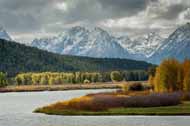 |
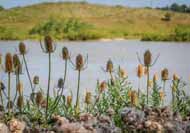 |
|
|
||
 |
 |
 |
|
|
||
 |
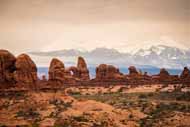 |
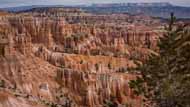 |
|
|
||
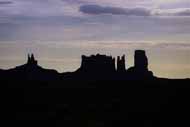 |
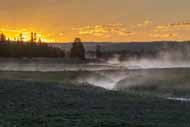 |
 |
|
|
||
 |
 |
 |
|
|
||
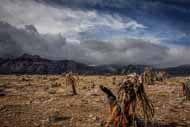 |
 |
 |
|
|
||
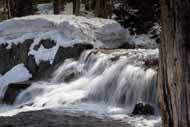 |
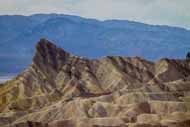 |
 |
|
|
||
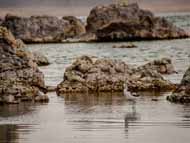 |
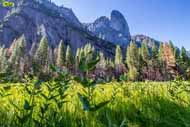 |
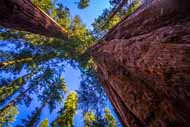 |
|
|
||
 |
 |
 |
|
|
||
 |
 |
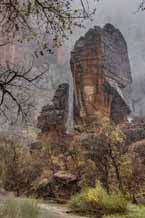 |
|
|
||
 |
 |
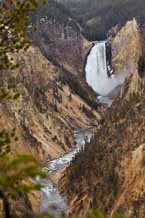 |
|
|
||
 |
These photos were taken in many of our National Parks, Monuments and parklands. As you read this, I’m off to other outdoor places to experience more of our earth. | 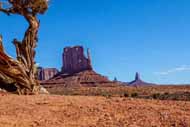 |
|
|
||
To the best of my ability I continue to practice “leave no trace photography” – disturb neither our wildlife nor its surroundings. Photography, whether conventional or digital, is a gift that lets me enjoy the wonders of our amazing world visually. I think many others agree.
I’ve long been conscientious about my “environmental footprint” – using recyclable packaging; choosing fuel-efficient vehicles; keeping our trees healthy; reducing fertilizer and pesticide usage. Individually I’m not making much of a difference but together we can really make a dent.
As for Earth Day – some believe that it is the world’s largest annual non-religious holiday with more than a billion participants.
Happy Earth Day!
More Information
Here’s a few articles about Earth Day and about the conventional vs digital photography debate.
- How to Reduce Your Environmental Footprint
- How to Be an Environmentally Friendly Photographer
- Environmental impact of digital cameras compared to film
- Environmental Effects of E-Waste
- Analog vs. Digital Photography
- How Photographers Are Reducing Their Environmental Impact
For those of you who are interested in the movement, here is a link to one of the main Earth Day sites.
************************************************************************
Written by Arnie Lee.
Please leave your comments below or address your thoughts about this article, to Arnie via email
|
Canadian Railroad Trilogy By Gordon Lightfoot |
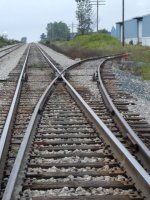 |
|
There was a time in this fair land when the railroad did not run When the wild majestic mountains stood alone against the sun Long before the white man and long before the wheel When the green dark forest was too silent to be real But time has no beginnings and history has no bounds As to this verdant country they came from all around They sailed upon her waterways and they walked the forests tall And they built the mines the mills and the factories for the good of us all And when the young man’s fancy was turning to the spring The railroad men grew restless for to hear the hammers ring Their minds were overflowing with the visions of their day And many a fortune lost and won and many a debt to pay For they looked in the future and what did they see They saw an iron road running from sea to the sea Bringing the goods to a young growing land All up through the seaports and into their hands Look away said they across this mighty land From the eastern shore to the western strand Bring in the workers and bring up the rails We gotta lay down the tracks and tear up the trails Open your heart let the life blood flow Gotta get on our way cause were moving too slow Bring in the workers and bring up the rails We’re gonna lay down the tracks and tear up the trails Open your heart let the life blood flow Gotta get on our way cause were moving too slow Get on our way cause were moving too slow Behind the blue Rockies the sun is declining The stars, they come stealing at the close of the day Across the wide prairie our loved ones lie sleeping Beyond the dark oceans in a place far away We are the navvies who work upon the railway Swinging our hammers in the bright blazing sun Living on stew and drinking bad whiskey Bending our old backs til the long days are done We are the navvies who work upon the railway Swinging our hammers in the bright blazing sun Laying down track and building the bridges Bending our old backs til the railroad is done So over the mountains and over the plains Into the muskeg and into the rain Up the St. Lawrence all the way to Gaspe Swinging our hammers and drawing our pay Driving them in and tying them down Away to the bunkhouse and into the town A dollar a day and a place for my head A drink to the living and a toast to the dead Oh the song of the future has been sung All the battles have been won Oer the mountain tops we stand All the world at our command We have opened up the soil With our teardrops and our toil For there was a time in this fair land when the railroad did not run When the wild majestic mountains stood alone against the sun Long before the white man and long before the wheel When the green dark forest was too silent to be real When the green dark forest was too silent to be real And many are the dead men too silent to be real |
|
|
Conviction Of The Heart By Kenny Loggins |
|
Where are the dreams that we once had? This is the time to bring them back. What were the promises caught on the tips of our tongues? Do we forget or forgive? There’s a whole other life waiting to live when One day we’re brave enough To talk with Conviction of the Heart. And down your streets I’ve walked alone, As if my feet were not my own Such is the path I chose, doors I have opened and closed I’m tired of living this life, Fooling myself, believing we’re right I’ve never given love With any Conviction of the Heart One with the earth, with the sky One with everything in life I believe we’ll survive If we only try How long must we all wait to change This world bound in chains that we live in To know what it is to forgive And be forgiven? Too many years of taking now. Isn’t it time to stop somehow? Air that’s too angry to breathe, water our children can’t drink You’ve heard it hundreds of times You say you’re aware, believe and you care, But do you care enough To talk with Conviction of the Heart? |
Earth Day 2011
19th April 2011
|
Earth Day 2011
… 41 years and counting Note: This article as been adapted from the original written for Earth Day 2007.
April 22, 2011
On a daily basis owing to my job, my thoughts are usually centered on the topic of photography. But recently, a few things happened to jog my memory and I was carried back to the first Earth Day of 1970. Stick with me. I’ll get back to the subject of photography soon enough. From the time I first started reading his compelling, black humor books, novelist Kurt Vonnegut has been one on my favorite authors. He died in April 2007 shortly before the original version of this article was published. The news coverage of his life and death had my mind wandering back to the late 60’s and early 70’s when I was a student at the University of Michigan (U of M) in the city of Ann Arbor. Somewhere in that time frame, Vonnegut was asked to be “Writer in Residence” at the University. As one of the most widely read authors of the 1960’s generation, he was sure to have a large, welcoming audience among would-be writers studying at the U of M. He sometimes frequented a small, local campus restaurant called “The Brown Jug” where he’d have breakfast and smoke lots of cigarettes. Back then, it was popular lore that Vonnegut declared smoking to be the slowest form of suicide. My wife Kris, then a student and part-time waitress, was also a Vonnegut reader. On occasion, she would wait on him in the restaurant. She admitted, that owing to her hearing difficulty, she was not a very good waitress and therefore frustrated the celebrated writer with her (lack of) service. More to the point, his purpose on campus as writer in residence ended abruptly when he left prematurely declaring something to the effect: “I’m leaving Ann Arbor since I have nothing much to teach you about writing.” So it goes.
To put things in the proper perspective, 1970 was a very vibrant, exciting and yet conflicted era. I’m reminded of Charles Dicken’s quotation in my high school year book which aptly describes the period: “it was the best of times and it was the worst of times….we were all going direct to heaven, we were all going direct the other way”. This was the period of Viet Nam and Kent State, living off the earth and making peace, hippies and long hair. We were contemporaries of heavy metal, Motown, James Taylor, Woodstock and The Beatles music. With this as a backdrop, we happen upon the Earth Day 1970 teach-in at the U of M. Not long after Vonnegut’s departure from the campus, we were treated to a free music concert. The well-known folk song artist Gordon Lightfoot came to town to perform for more than 12,000 screaming students in one of the large stadiums at the University. Gord had had been drawing large audiences around the US, Canada and Europe with his classic Canadian Railroad Trilogy (click for lyrics), a poetic ballad describing the building of the railroads across Canada and the difficult tradeoffs between developing the economy and keeping the land pristine for the future. His music was great back then and to this day, I remain a Lightfoot fan. I was so much the fan that a few years ago I traveled to Las Vegas (by myself since no family member wanted to accompany me) to hear him in concert. And I ended up staying for two of his performances. Would you believe that I even have a life size poster of Gord which was gifted to me by the advertising manager at the Orleans Casino? Anyway, traveling back to 1970, we understood that Lightfoot’s appearance was part of what was to be part of the first Earth Day teach-in, a gathering of some 50,000 in Ann Arbor to discuss, educate and find solutions to environmental problems created by the earth’s inhabitants. From all of the excitement and the energy which went into the production of the first Earth Day teach-ins, many of us believed that we were on the verge of saving the environment. As an economics student, I was counting on a future career that would revolve around conservation, ecology and recycling. I was deeply serious about this course of study and studied writings from the likes of educators and humanists Kenneth Boulding, Buckminster Fuller and E.F. Schumacher and took courses such as remote sensing of the environment and cost-benefit analysis. My great enthusiasm for all things environmental waned some time after graduating with a degree in Natural Resource Economics. It was fully a year later that I was still trying to find a job in this nascient field. Instead, I ended up in the computer and publishing business. So it goes. As I usually stay away from public discussions about politics, I won’t comment on how well or how poorly the earth’s inhabitants have done to improve the environment over the past 41 years. However, like others, I have observed a very large and urgent movement in recent years to resurrect many of the same or similar ideas from these earlier decades that call for a change in our lifestyles. So what does all of this rambling have to do photography? Well, to continue in the same vein, I thought it might be interesting to look at photography then and now to compare their individual environmental impacts. At first, I thought this was going to be a “no brainer” – that digital photography yields huge environmental savings compared to conventional photography. But as I began to dig deeper, I was reminded that there are two compelling sides to this argument. Conventional Photography Having worked in several commercial photo labs long before the advent of digital, I’m familiar with the processes that are used in conventional (film-based) photography. Most conventional cameras use a cartridge or cannister filled with film for 12, 20 or 36 exposures. Each “roll” of film is individually packaged for sale in hundreds of thousands of retail locations. Besides the resources needed to manufacture the film, a considerable amount more are used to market and distribute the products. Film derives its light sensitivity from a chemical mixture of silver halide that’s coated onto its surface. After being exposed to light by the camera, the film is first “developed” – the silver halide image is converted into a metallic silver and then “fixed” – the unused silver halide is dissolved. This makes the negative image permament. Color film requires additional chemicals to form the dyes used to reproduce the various colors. And still other chemicals are used to enhance the drying of the photographic materials. In addition to these chemicals, a large amount of water is used to rinse and clean the chemicals from the surface of the film. Conventional photographic prints are processed similarly using a silver halide sensitive paper and chemicals to develop and fix and wash the positive images. Most commercial photo labs make prints from each exposure on a roll of film. The environmental impact of conventional photography is significant. A large amount materials is consumed to make film and photographic paper. A large amount of nasty and toxic chemicals are used to process both the film and prints. And an awfully large amount of fresh water is used in the process as well.< /span> Digital Photography At first glance, the coming of age of digital photography appears to have a beneficial impact on the environmental. With digital, no longer is there a need for roll after roll of film. Instead a single chip (SD-card or CF-card) can capture hundreds, maybe thousands of images. Now, these digital images no longer require chemical development. Rather, the images are immediately available to review while still in the camera. For permanance, the images can be copied to your computer hard drive for safekeeping, further enhancement and presentation. Unlike conventional processing where each exposure is mindlessly printed by the photo lab, you can be more selective. Instead you can choose to print only the best of the best images. And it’s your choice to print them using a conventional photo process at your favorite photo lab or print them at home on your color ink-jet printer. Regardless of which camera you’ve purchased, digital photography seems like a winner from an environmental standpoint. The Rest of the Story As with many things in life, digital photography has a few “gottcha’s” that cloud its environmental friendly moniker. The upside is that digital provides big savings in resources by eliminating film, packaging, paper and chemical processing. However, digital shifts the resource burden to the manufacturing and maintaining of the personal computer. Yes, there are some who make do without a personal computer. These picturetakers bring their digital film to a photo lab to make their selected prints. But most picturetakers collect, organize, retouch, process and present their photographs using a personal computer. While it’s slightly dated, according to a United Nation report from 2004, “the average 24 kg desktop computer with monitor requires at least 10 times its weight in fossil fuels and chemicals to manufacture, much more materials intensive than an automobile or refrigerator, which only require 1-2 times their weight in fossil fuels. Researchers found that manufacturing one desktop computer and 17-inch CRT monitor uses at least 240 kg of fossil fuels, 22 kg of chemicals and 1,500 kg of water – a total of 1.8 tonnes of materials.” Of course a personal computer is used for other tasks as well, so it’s not fair to put the full blame for digital photography’s negative impact on the environment. And to power all of these cameras, computers and accessories the need for electricity either from the wall outlet or batteries is climbing. Does this contribute to our CO2 footprint? Not surprisingly, manufacturers are working feverishly to add new and amazing whiz-bang features to their cameras. Now instead of buying a conventional camera every ten years or so, the buying cycle for digital cameras is a lot more frequent. Read: more resources consumed. Wrapping it Up We can credit the overwhelming adoption of digital cameras for saving the environment from millions of rolls of film and the required chemicals to develop the the film and prints. In addition to the great quality of digital technology, we benefit from a huge reduction of harmful photographic chemicals. Unfortunately, after we add the personal computer to complete the processing, digital photography is a mixed bagged from an environmental standpoint. In his novel Slaughterhouse Five, Kurt Vonnegut might comment on this no-win situation with the phrase so it goes. As for me, after all of these years as an avid photographer I’m still a proponent of carefully using our precious natural resources. Aside from photographing family, my favorite pastime is nature and landscape photography. To the best of my ability I continue to practice “leave no trace photography” – disturb neither our wildlife nor our environment. Photography, whether conventional or digital, is a gift that lets me enjoy the wonders of our amazing world visually. I think many others agree. The Environmental Impact of Digital Photography For those of you who have the inclination, here are few links to Earth Day sites. ************************************************************************ |
Earth Day 2010 – looking backward and forward and upward
21st April 2010
|
Earth Day 2010
… 40 years and still counting Note: This recently updated article was adapted from an article written for Earth Day 2007.
April 21, 2010
On a daily basis owing to my job, my thoughts are usually centered on the topic of photography, aviation and airplanes. But recently, a few things happened to jog my memory and I was carried back to the first Earth Day of 1970. Stick with me. I’ll get the other parts soon enough. From the time I first started reading his compelling and humorous books, novelist Kurt Vonnegut has been one on my favorite authors. He died in April 2007 shortly before the original version of this article was published. With his passing I made it a point to listen to my favorite NRP radio station and to read the newspaper articles about one of America’s funniest writers of the 20th century. I also made my way over to the local bookstore to buy a few Vonnegut books so as to refresh my slowly failing memory with a few of his lesser known works. The news coverage of his life and death had my mind wandering back to the late 60’s and early 70’s when I was a student at the University of Michigan (U of M) in the small city of Ann Arbor. Somewhere in that time frame, Vonnegut was asked to be “Writer in Residence” at the University. As one of the most widely read authors of the 1960’s generation, he was sure to have a large, welcoming audience among would-be writers studying at the U of M. He sometimes frequented a small, local campus restaurant called “The Brown Jug” where he’d have breakfast and smoke lots of cigarettes. It was popular lore that he claimed smoking to be the slowest form of suicide. My wife Kris, then a student and part-time waitress, was also a Vonnegut reader. On occasion, she would wait on him in the restaurant. She admitted, that owing to her hearing difficulty, she was not a very good waitress and therefore frustrated the celebrated writer with her (lack of) service. More to the point, his purpose on campus as writer in residence ended when he left prematurely declaring something to the effect: “I’m leaving Ann Arbor since I have nothing much to teach you about writing.” So it goes.
To put things in the proper perspective, 1970 was a very vibrant, exciting and yet conflicted era. I’m reminded of Charles Dicken’s quotation in my high school year book which aptly describes the period: “it was the best of times and it was the worst of times….we were all going direct to heaven, we were all going direct the other way”. This was the period of Viet Nam and Kent State, living off the earth and making peace, hippies and long hair. We were contemporaries of heavy metal, Motown, James Taylor, Woodstock and The Beatles music. With this as a backdrop, we happen upon the Earth Day 1970 teach-in at the U of M. Not long after Vonnegut’s departure from the campus, we were treated to a free music concert. The popular folk song artist Gordon Lightfoot came to town to perform for more than 12,000 screaming students in one of the large stadiums at the University. Gord had had been drawing large audiences around the US, Canada and Europe with his classic Canadian Railroad Trilogy (click for lyrics), a poetic ballad describing the building of the railroads across Canada and the difficult tradeoffs between developing the economy and keeping the land pristine for the future. His music was great back then and to this day, I remain a Lightfoot fan. I was so much the fan that two years ago I traveled to Las Vegas (by myself since no family member wanted to accompany me) to hear him in concert at the Orleans Casino. And I ended up staying for two of his performances. Would you believe that I even have a life size poster of Gord which I gifted to myself courtesy of the advertising manager at the Orleans? Anyway, traveling back to 1970, we understood that Lightfoot’s appearance was part of what was to be part of the first Earth Day teach-in, a gathering of some 50,000 in Ann Arbor to discuss, educate and find solutions to environmental problems created by the earth’s inhabitants. From all of the excitement and the energy which went into the production of the first Earth Day teach-ins, many of us believed that we were on the verge of saving the environment. As an economics student, I was counting on a future career that would revolve around conservation, ecology and recycling. At the time, I was deeply serious about this course of study. I studied writings from the likes of educators and humanists Kenneth Boulding, Buckminster Fuller and E.F. Schumacher and took courses such as remote sensing of the environment and cost-benefit analysis. My great enthusiasm for all things environmental waned some time after graduating with a degree in Natural Resource Economics. It was fully a year later that I was still trying to find a job in this nascient field. Instead, I ended up in the computer business. So it goes. As I usually stay away from public discussions about politics, I won’t comment on how well or how poorly the earth’s inhabitants have done to improve the environment over the past 40 years. However, like others, I have observed a very large and urgent movement in recent years to resurrect many of the same or similar ideas from these earlier decades that call for a change in our lifestyles. As a side note, the Boeing 747 jumbo jet was introduced to the world at about this same time. Its launch was just coincidental to the first Earth Day. So what does all of this rambling have to do with aviation and photography? {Among other topics, our company is involved with both flight simulation and photography.} Well, to continue in the same vein, I thought it might be interesting to look at several aircraft and compare their individual environmental impact. Here’s a table that I compiled from publicly available data.
Acknowledging that the raw data in the above table is open to much discussion, it is still interesting to compare gross numbers. When Earth Day 1 was held, the most was the most widely used aircraft of the time was Boeing’s 727. As you can see, the fuel consumption per passenger of the three-engine 727 was more than double that of the twin-engine Boeing 737 used as the daily workhorse today. As already noted, the original Boeing 747-100 appeared about the same time as Earth Day 1. And its fuel consumption was comparable to the Boeing 727. We see that today’s Boeing 747-400 has 20% better fuel economy today than its early predecessor. As it is today, noise pollution was also a concern in 1970. Pushed by local community noise abatement regulations, many airports placed restrictions on night time operations giving us more quiet sleep time. At the same time, aircraft manufacturers were making continuous reductions in engine noise. By some accounts, we’re told that engine noise is 50% less than in 1970. The industry has been on the right track over this time period. And preliminary estimates for the next generation Boeing 787, Airbus 350 and Airbus 380 promise even more improvements in fuel and noise. I suppose we can draw some comfort from the fact that today’s aircraft are clearly more efficient today than the aircraft of 37 years ago. And look, we’re no longer flying the Concorde SST which had an atrocious fuel burn. But concerning the environment, the world today flies a significantly larger number of aircraft each day than were flown back in 1970. Yes, it’s true that we’re moving more passengers over longer distances and at faster speeds. But the unspoken costs to the common community for this mode of transportation are the continued high requirements of limited fossils fuels and the contribution of the fuel burn to global warming. In the Kurt Vonnegut tradition, it might be nice if we could become “unstuck in time“- go back and make a few corrections to the decision making of the past 40 years to steer us on a slightly different course. Those of you who are fans of flight simulation might take at least a little pride in the fact that your hobby helps preserve the environment as compared to real flight. While the manufacturing of computers and computer usage do have an impact on the environment, the impact is not of the same magnitude as the manufacturing and operation of aircraft. So you might consider all types of computer simulation as a modest way to help from further damaging the world around us. On the photography side, we can credit the overwhelming adoption of digital cameras for saving the environment from millions of rolls of film and the required chemicals to develop the the film. In addition to the great quality of digital technology, we benefit from a huge reduction of harmful photographic chemicals. This past week we’ve seen how the activity of a single volcano in remote Iceland demonstrates the fragility of the global environment. The ash clouds produced by the eruption of Eyjafjallajoekull has created a cascade of disruptions in Europe. Not only has air travel been severely affected, but other commercial enterprises such as food suppliers and medical services have suffered. To underline the impact of air travel on the environment I found a study that compares the carbon dioxide emissions from European aircraft operations and the volcano. According to the report, the daily CO2 output from daily aircraft operations is 345,000 tons compared to that of the volcano. I won’t disagree that this may be an unfair comparison – the public benefits from air travel while it’s questionable whether the pubic benefits from the volcano eruption. However, this exercise illustrates one of the costs to society from air travel. As Mr. Vonnegut reiterates from his Slaughterhouse Five, so it goes. For those of you who have the inclination, here are few links to Earth Day sites. ************************************************************************ Author: Arnie Lee, former flower child and President of Abacus *Eyjafjallajokull volcano photo used under creative commons license by Narisa via Flickr. Address any comments about this article, to Arnie via email |
There was a time in this fair land when the railroad did not run When the wild majestic mountains stood alone against the sun Long before the white man and long before the wheel When the green dark forest was too silent to be real But time has no beginnings and history has no bounds As to this verdant country they came from all around They sailed upon her waterways and they walked the forests tall And they built the mines the mills and the factories for the good of us all And when the young man’s fancy was turning to the spring The railroad men grew restless for to hear the hammers ring Their minds were overflowing with the visions of their day And many a fortune lost and won and many a debt to pay For they looked in the future and what did they see They saw an iron road running from sea to the sea Bringing the goods to a young growing land All up through the seaports and into their hands Look away said they across this mighty land From the eastern shore to the western strand Bring in the workers and bring up the rails We gotta lay down the tracks and tear up the trails Open your heart let the life blood flow Gotta get on our way cause were moving too slow Bring in the workers and bring up the rails Were gonna lay down the tracks and tear up the trails Open your heart let the life blood flow Gotta get on our way cause were moving too slow Get on our way cause were moving too slow Behind the blue rockies the sun is declining The stars, they come stealing at the close of the day Across the wide prairie our loved ones lie sleeping Beyond the dark oceans in a place far away We are the navvies who work upon the railway Swinging our hammers in the bright blazing sun Living on stew and drinking bad whiskey Bending our old backs til the long days are done We are the navvies who work upon the railway Swinging our hammers in the bright blazing sun Laying down track and building the bridges Bending our old backs til the railroad is done So over the mountains and over the plains Into the muskeg and into the rain Up the St. Lawrence all the way to Gaspe Swinging our hammers and drawing our pay Driving them in and tying them down Away to the bunkhouse and into the town A dollar a day and a place for my head A drink to the living and a toast to the dead Oh the song of the future has been sung All the battles have been won Oer the mountain tops we stand All the world at our command We have opened up the soil With our teardrops and our toil For there was a time in this fair land when the railroad did not run When the wild majestic mountains stood alone against the sun Long before the white man and long before the wheel When the green dark forest was too silent to be real When the green dark forest was too silent to be real And many are the dead men too silent to be real |


